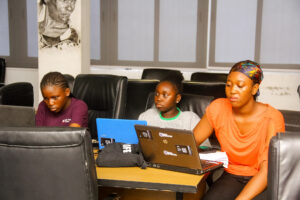Imagine a classroom where students don’t just solve math problems or run science experiments but use their creativity to design and explore new ideas. That’s what STEAM education is all about. It goes beyond the usual STEM subjects (Science, Technology, Engineering, and Math) by adding the Arts. This approach gives kids a more well-rounded education, helping them think creatively while also building essential tech skills.
What is STEAM Education?
STEAM stands for Science, Technology, Engineering, Arts, and Mathematics. It’s similar to STEM but with a focus on creativity and the arts. While STEM focuses mainly on logical and analytical skills, STEAM includes the arts to help students use their imagination and think outside the box.
In a STEAM program, kids might not just build a robot but also design how it looks or think about how people will use it. They could code a video game and also create the characters and the story behind it. This mix of subjects helps students become more creative and better problem-solvers.
Why are the Arts Important in STEAM?
Adding the Arts to the traditional STEM education is important because:
- Creativity fuels innovation: Some of the best ideas come from creative thinking. The arts help students approach problems in new ways, leading to innovative solutions.
- Design and critical thinking: Many jobs today, from tech to product design, need both technical skills and creative thinking. The arts teach students how to design while considering both the form and function.
- Communication and empathy: Art helps students express ideas and communicate better. It also teaches them to understand different perspectives, which is essential for creating products and solutions that work well for everyone.
How STEAM Prepares Students for the Future
The world is changing fast, and many jobs now need both technical and creative skills. Whether it is designing apps, solving global challenges like climate change, or creating the next big tech product, students need a mix of knowledge.
STEAM helps students prepare for future careers through:
- Solving problems creatively: STEAM education encourages students to think in creative ways when tackling complex problems, a skill that’s valuable in almost every field.
- Collaboration: STEAM promotes working in teams, just like how engineers, designers, and marketers work together in the real world. Students learn how to collaborate and value different perspectives.
- Flexibility: The combination of arts and technology in STEAM education helps students become adaptable and open to change, which is crucial in our world today.
- Career readiness: Many future jobs will require both technical abilities and creative thinking. Whether it is designing software, creating digital art, or solving real-world problems, STEAM prepares students for a wide range of exciting career opportunities.
How STEAM is Growing Globally
Countries like the U.S., Finland, and South Korea are making STEAM education a priority because they know how important it is for future job growth. In Nigeria, where technology is booming, STEAM education can help students learn the skills they need to thrive in a tech-driven world.
How Rubies Technologies is Embracing STEAM
At Rubies Technologies, we believe in the power of STEAM to prepare kids and teenagers for the future. That’s why we offer programs that teach tech skills in creative ways. Our programs encourage students to think outside the box, collaborate with others, and apply what they’ve learned in real-life situations.
- Summer of Code: In our Summer of Code program, kids didn’t just learn to code. They also designed projects that solve real-world problems, used creativity to come up with solutions, and worked together to build their ideas.
- Private Code Classes and Weekend Group Classes: These classes are perfect for students who want to continue learning tech skills. In our private classes, kids get one-on-one coaching at any time of their choosing, while our weekend group classes let them collaborate with other students in a fun, hands-on environment during the weekend.
- Skill Up with Tech: For secondary school leavers, this program provides a unique opportunity to learn both tech and creative skills. It is perfect for students who want to make the most of their gap year and gain a competitive edge before entering university.
At Rubies Technologies, we know that the future isn’t just about knowing how to code or solve math problems, it is about being creative, collaborative, and ready to take on new challenges. By combining tech with the arts, we are helping the next generation of innovators thrive.
How to Encourage STEAM Learning at Home
Parents can support STEAM learning at home by encouraging kids to combine creativity with technology. Here are a few ideas:
- Mix art with tech: Encourage your child to design something before they build it, like drawing a blueprint for a robot or creating characters for a video game.
- Hands-on activities: Projects like building LEGO structures, coding small apps, or conducting simple science experiments can foster both creativity and critical thinking.
- Real-world examples: Show your child how STEAM is used in everyday life, from the architecture of a building to the design of a smartphone.
Why STEAM Matters
STEAM education isn’t just about learning how to code or solve math problems, it is about teaching students to think creatively and critically. As technology continues to evolve, the ability to merge technical skills with creative thinking will be more important than ever.
At Rubies Technologies, we are proud to offer programs that teach kids and teenagers both the technical and creative skills they need to succeed in today’s world. Whether through coding, design, or hands-on projects, we’re helping students build a bright future in tech.
The world is changing fast, and we’re here to make sure that the next generation is ready to face it with both the knowledge and the creativity they need to thrive.



